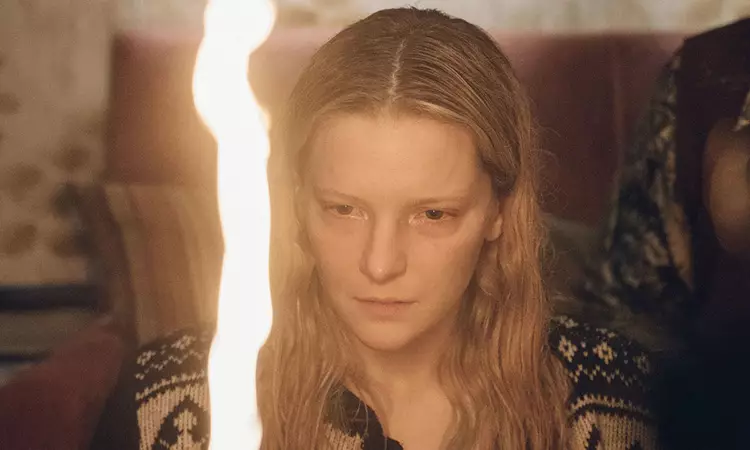Daniel Kokotajlo’s “Starve Acre” stands as a testament to the rich tradition of British folk horror, drawing inspiration from notable classics such as Jerzy Skolimowski’s “The Shout,” Nic Roeg’s “Don’t Look Now,” and Robin Hardy’s “The Wicker Man.” Set against the atmospheric backdrop of Yorkshire, the film captures the intricacies of grief, memory, and isolation in a meticulously crafted narrative. With its roots anchored in Andrew Michael Hurley’s acclaimed novel, the adaptation finds strength in its profound sound design and stunning cinematography by Adam Scarth. While these elements have garnered acclaim, the film often feels entrenched in familiarity, echoing the themes and visuals of its predecessors.
The story unfolds as Richard, an archaeologist portrayed by Matt Smith, returns to his family’s ancestral home after the death of his father. Accompanied by his wife Juliette (Morfydd Clark) and their young son Owen (Arthur Shaw), Richard’s journey extends beyond mere relocation; it is an exploration of the emotional landscape that emerges from loss. The allure of Starve Acre serves as a duality—a picturesque yet eerie landscape, where vibrant local folklore juxtaposes with the couple’s internal tumult. As Owen begins to exhibit unsettling behavior, the strain on the family markedly amplifies the atmosphere of unease that permeates their lives.
Kokotajlo effectively integrates the local mythology into the narrative, weaving in varied elements such as folktale poetry and traditional illustrations that enrich the viewing experience. The film’s production design, steeped in 1970s aesthetics, brilliantly captures the essence of the era, evoking nostalgia while further intensifying the eerie ambiance. Richard’s obsessive excavation of a Hare skeleton and an ancient oak tree—the site of local hangings—serves as a metaphor for the couple’s grappling with their shared trauma, emphasizing the intertwining of personal and cultural narratives.
Juliette’s path to coping, explored through her interactions with her sister Harrie (Erin Richards) and a mysterious local woman who introduces her to unconventional rituals, underlines the duality of their dealings with grief. The film illustrates how different coping mechanisms can pull partners apart, ultimately showcasing the fragility of human connections when faced with the weight of sorrow.
Amidst the supernatural ambiance, performances by Smith and Clark are standouts. Their ability to capture the nuances of a couple at odds, each buried in their respective grief, is compelling. Despite the haunting tales and striking visuals, “Starve Acre” falls short in delivering profound emotional stakes. The rooted mythology and psychological undertones, while rich with potential, struggle to elicit a deep emotional response from the audience.
While “Starve Acre” offers a considerable amount to admire, particularly for enthusiasts of the folk horror genre, it ultimately grapples with a sense of jejunity. The echoes of past masterpieces loom large over this narrative, highlighting a struggle to carve out an identity that resonates uniquely within the rich tapestry of British cinema. As the film concludes, viewers may find themselves reflecting not only on the narrative itself but on the deeply woven dialogues between folklore and the human experience of grief, longing for a more resonant emotional journey.


Leave a Reply